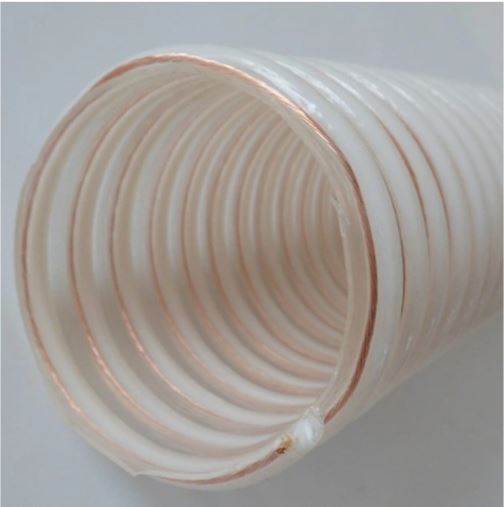wire reinforced suction hose
The Advantages of Wire Reinforced Suction Hoses
Wire reinforced suction hoses have become a vital component in various industrial applications due to their strength, flexibility, and durability. With the increasing demand for efficient fluid transfer solutions across industries such as construction, agriculture, and manufacturing, these hoses have carved a niche for themselves. This article explores the features, advantages, and typical applications of wire reinforced suction hoses.
What is a Wire Reinforced Suction Hose?
A wire reinforced suction hose is a type of flexible hose that features a layer of wire reinforcement woven into its structure. This reinforcement provides additional strength, enabling the hose to withstand both negative and positive pressure applications. Made typically from PVC or rubber, these hoses are designed to handle the suction and delivery of various liquids, including water, chemicals, and slurry.
Key Features
1. Durability One of the standout features of wire reinforced suction hoses is their impressive durability. The wire reinforcement prevents collapse under vacuum conditions, making them ideal for suction applications where the hose needs to maintain structural integrity.
2. Flexibility Despite their strength, these hoses remain flexible, allowing for easy handling and installation. This flexibility also enables the hose to bend and maneuver around obstacles without damage.
3. Resistance Wire reinforced hoses are resistant to abrasion, kinks, and punctures, which extends their lifespan and minimizes maintenance costs. Additionally, depending on the material, these hoses can be resistant to various chemicals and temperatures.
4. Variety These hoses are available in a range of sizes, lengths, and configurations, making it easy to find the right fit for specific applications. They can also be custom-made to meet unique requirements, adding to their versatility.
Advantages of Wire Reinforced Suction Hoses
wire reinforced suction hose

1. High Performance With their ability to handle both vacuum and positive pressure conditions, wire reinforced suction hoses are ideal for a wide range of applications. They effectively transport liquids, enabling efficient operations in industrial processes.
2. Safety The robust construction of these hoses reduces the risk of rupture or collapse, providing a safer working environment. This is particularly important in applications where high-pressure fluids are involved.
3. Cost-Effectiveness Though they may have a higher initial cost compared to standard hoses, the durability and reduced maintenance needs of wire reinforced suction hoses can lead to significant savings over time. Their longevity ensures a great return on investment.
4. Ease of Installation The flexible nature of these hoses allows for straightforward installation, even in complex configurations. This ease of use can save time during setup and repairs.
Typical Applications
Wire reinforced suction hoses are widely used across several industries. Some common applications include
- Construction Transporting water, slurry, and other materials at construction sites where suction and drainage are required. - Agriculture Used for transferring water for irrigation or drainage purposes, especially in areas where flexibility and maneuverability are needed. - Waste Management Suction hoses are essential in vacuum tankers for efficiently removing waste materials. - Industrial Cleaning Employed in vacuums and cleaning machines that require high suction power. - Chemical Processing Suitable for transporting various chemicals due to their resistance properties, ensuring safety in handling hazardous materials.
Conclusion
Wire reinforced suction hoses are essential tools in many industries due to their unique combination of strength, flexibility, and durability. They effectively address the demands of transferring fluids under various conditions, ensuring high performance and safety. As industries continue to evolve and require advanced solutions for fluid management, the application of wire reinforced suction hoses is likely to expand, reinforcing their position as a reliable choice in fluid transfer.
-
Top Quality Oxy Acetylene Hoses for Sale Fit for Welding DemandsNewsJul.28,2025
-
The Future of Pneumatic Air Tubes in IndustryNewsJul.28,2025
-
Superior and Reliable LPG Hose Pipe Solutions for Every NeedNewsJul.28,2025
-
Exceptionally Durable and Versatile Premium Braided PVC TubingNewsJul.28,2025
-
Best Adapters for Connecting Garden Hose to PVC Pipe ConnectionsNewsJul.28,2025
-
The Essential Role of LPG Hoses in Safe and Efficient Gas DistributionNewsJul.16,2025














